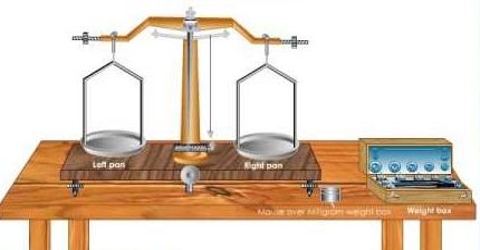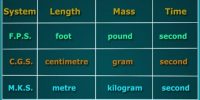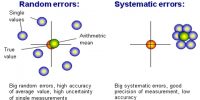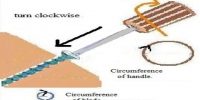Experiment: Determination of Mass of a Body by the method of Oscillation with the help of a Balance
Normally the balance that is used in the laboratory is shown in the figure.
Description of the balance:
As a base of the balance there is a wooden base leveling screws L1 and L2 are attached at the lower end of the base. The stand of the balance can be made vertical by rotating the screws. T is a hollow stand, made of metal standing vertically on the wooden frame. It is called the pillar of the balance. A metallic frame is attached to it. By handle H a metallic rigid needle D can be raised or lowered vertically through the stand. On the balance-stand D a slate (P/) made of agate stone is attached.
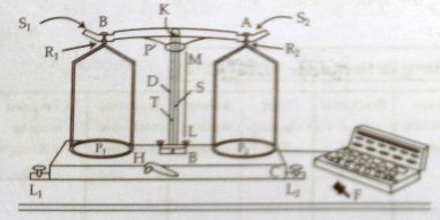
The balance-rod AB is a rigid metallic rod. Though the centre of mass of this rod a three-headed piece K made of agate stone is attached. When the balance-needle D is raised above, the balance-rod becomes free from the frame of the stand. In this position the sharp agate piece remains on a plane agate piece. As a result the balance-rod can oscillate freely. Just above the centre of the balance-rod a long and thin needle is attached. It is called the index needle of the balance. This needle can move freely on a scale S attached at the bottom of the balance-stand T.
Two pans P1 and P2 are hanged from two stirrups R1 and R2 placed on sharp steel pieces attached on the two ends of the balance-rod. There are two screws S1 and S2 at the two ends of the balance-rod. By rotating these two screws the centre of the balance-rod is placed on the agate piece. A balance thread ML is attached to see whether the balance is vertical or not.
For accurate measurement, the balance is places inside a glass-box having doors. These doors can he opened or closed when ever needed.
Theory: While taking weight by the balance the needle of the balance is raised, then the index-needle oscillates to and fro. Slowly the amplitude of oscillation starts decreasing and at one time it come to rest.
Suppose, the steady point of the index-needle, when there is no weight on any pan, is X. Now, the body whose weight is to be measured is placed on the left pan and necessaryweight is placed on the right pan. The steady point of the index-point is Y when the body is on the left pan and weight (W1 + 10 mgm) on the right pan. Now if the steady paint is Z when the body is on the left pan and weight (W1 + 20 mgm) on the right pan, then tor extra 10 mg weight the index needle of the balance is changed by (Z – Y) divisions.
So, for a change of 1 division change of weight will be;
10/(Z-Y) mg = 10/(Z-Y)x1/1000 g = 1/[(Z-Y)x1000]g
For the change of (Z – Y) divisions, change of weight is,
1/[(Z-Y)x1000] x (Z – Y) = (Z – Y)/ (Z-Y)x1000
Hence, the actual weight of the body is,
W = [W1 + {(Z – Y)/ (Z-Y)x1000}g] … … … (1)
Apparatus: Ordinary balance, Wright box, body whose weight is to be determined.
Procedure:
(1) The two pans of the balance are to be cleaned by a soft brush.
(2) The stirrup and the two pans are to be placed in right positions.
(3) By leveling screws the balance is to be made horizontal. In this situation, the needle m1 will be just above the head of the lower part of m2.
(4) For the determination of the position of steady point X when there is nothing in any pan the needle of the balance is to be raised above. The index needle will then oscillate right and left. Three consecutive readings are to be taken when the needle crosses right side and two consecutive readings when the needle crosses left side of the central position.
Here, average of the steady point X is obtained by taking average of the three readings obtained for the left hand side and the average of the two readings obtained for the right hand side.
(5) Now by placing the body on the left pan and necessary weight W1 on the right pan readings are to be taken following the above procedure, in this way the steady point Y for the index needle is to be found out.
(6) Without removing the body from the pan, 10 mg weight is to be added with the existing weight in the right pan and following the above procedure the steady point for the needle Z is found out.
(7) Now using equation (1) to weight of the body is to be calculated.
